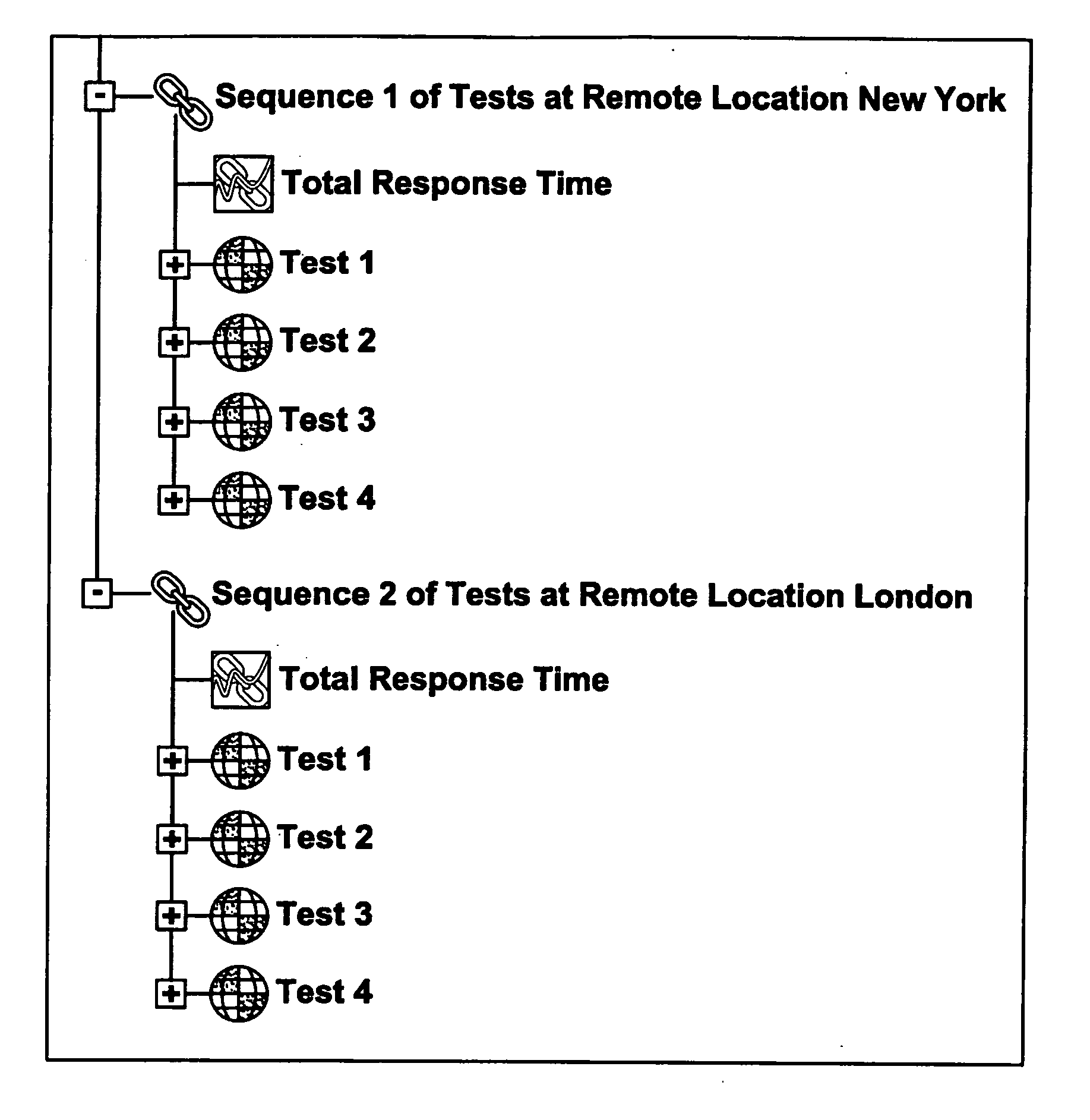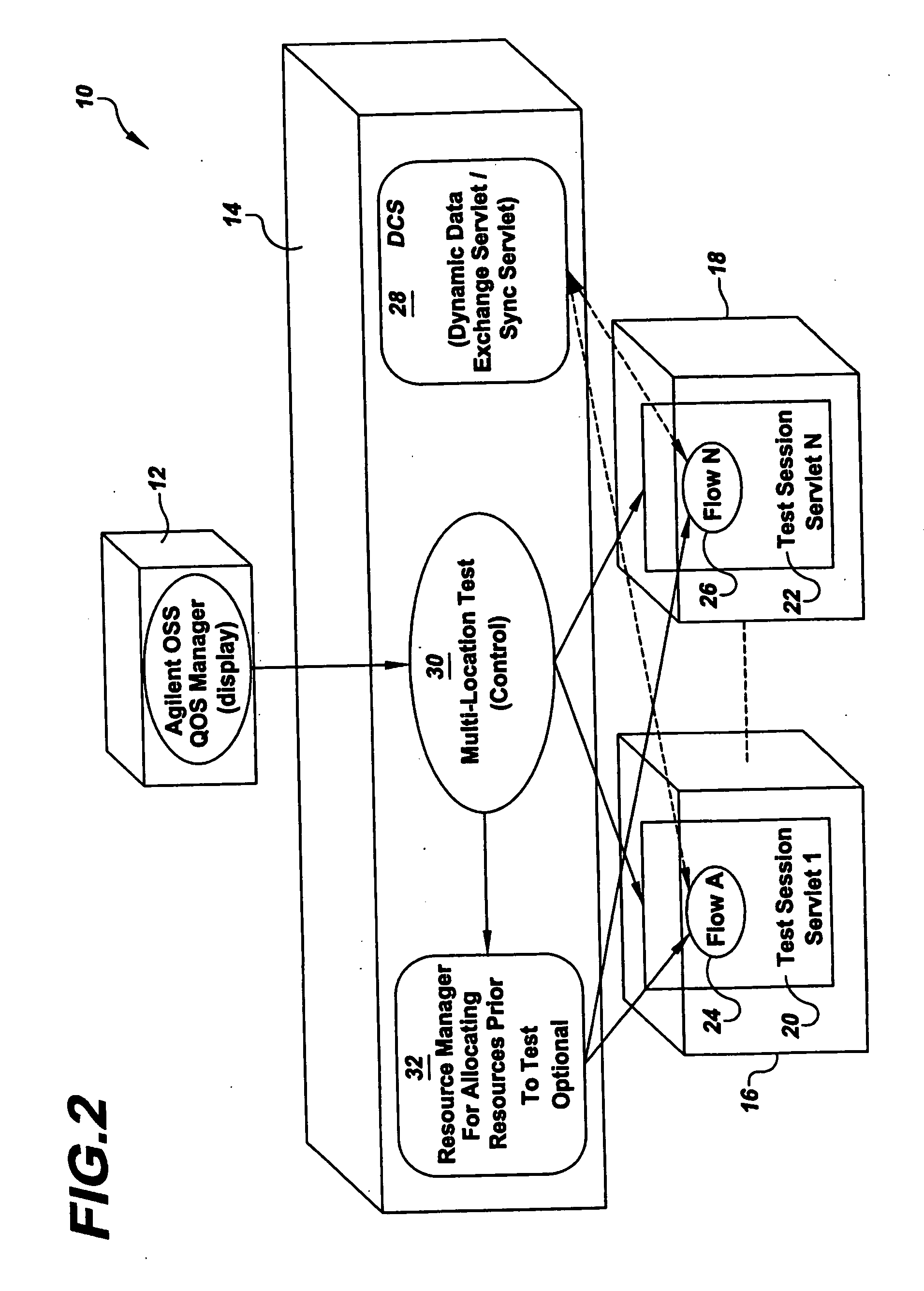System for and method of multi-location test execution
a multi-location and test execution technology, applied in the field of system and computer program products for componentized multi-location software testing, can solve the problems of inability to synchronize, inability to synchronize execution between flows (or virtual threads of execution) except, and certain problems persist, so as to achieve the effect of more efficient use of resources
- Summary
- Abstract
- Description
- Claims
- Application Information
AI Technical Summary
Benefits of technology
Problems solved by technology
Method used
Image
Examples
example 1
[0063] The MLT reads the text representation and identifies the number of flows (for example, flows 24, 26) in the test to be performed, any devices (16,18 for example) the tests need to be run on, and the remote locations of the agents which control the devices. The MLT contacts the TSS 20,22 running at each remote location associated with the flows and supplies the description of the sequence of tests to be run. Again, the TSS use standard Hypertext Transfer Protocol (HTTP), open network protocol used for the World Wide Web. The MLT, after identifying the number of flows in the test, contacts the TSS at the location of each flow substantially simultaneously and submits a request to run the sequence tests concurrently under each flow.
[0064] Synchronization and Dynamic Data Exchange Between Test Flows
[0065] In step 430 of the method illustrated in FIG. 4, the wireless test system 10 utilizes the DCS 28 to synchronize test execution and to control data exchange between or among rem...
example 2
WQM Sync Servlet Interface Design
(A) Input and Output Interface to the Sync / Dynamic Content Servlet
(1) Brief Description
[0081] The Dynamic Data Servlet will run on any QoSM WQM agent. It provides a data store for dynamic data of running tests and processes requests to “add”, “remove” or “get” dynamic data for a specific uniqueid, or to “delete” all data for that uniqueid.
(2) Dynamic Data Design Related Assumptions
[0082] The following attributes are found in the Wireless section of fh.conf. They may be overwritten by hidden (fh prefix) attributes in the Wireless Chain Test itself. [0083] DcsLocation—(String) default is the same as the Host (ATC) attribute. [0084] DcsPort—(Integer) default is 16716 [0085] DcsTimeout—(Integer) default 0 (look once, no waiting) [0086] DcsLookup—(Boolean) default true (check DCS if not in local store)
[0087] The following must be available in the flow level data stores: [0088] DcsLocation [0089] DcsPort [0090] DcsTimeout [0091] DcsLookup [0092] C...
PUM
 Login to View More
Login to View More Abstract
Description
Claims
Application Information
 Login to View More
Login to View More - R&D
- Intellectual Property
- Life Sciences
- Materials
- Tech Scout
- Unparalleled Data Quality
- Higher Quality Content
- 60% Fewer Hallucinations
Browse by: Latest US Patents, China's latest patents, Technical Efficacy Thesaurus, Application Domain, Technology Topic, Popular Technical Reports.
© 2025 PatSnap. All rights reserved.Legal|Privacy policy|Modern Slavery Act Transparency Statement|Sitemap|About US| Contact US: help@patsnap.com



